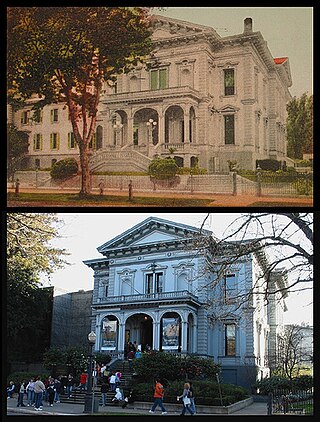Related Research Articles

Social science is one of the branches of science, devoted to the study of societies and the relationships among individuals within those societies. The term was formerly used to refer to the field of sociology, the original "science of society", established in the 19th century. In addition to sociology, it now encompasses a wide array of academic disciplines, including anthropology, archaeology, economics, human geography, linguistics, management science, communication science and political science.

Ethnography is a branch of anthropology and the systematic study of individual cultures. Ethnography explores cultural phenomena from the point of view of the subject of the study. Ethnography is also a type of social research that involves examining the behavior of the participants in a given social situation and understanding the group members' own interpretation of such behavior.

In sociology, social complexity is a conceptual framework used in the analysis of society. In the sciences, contemporary definitions of complexity are found in systems theory, wherein the phenomenon being studied has many parts and many possible arrangements of the parts; simultaneously, what is complex and what is simple are relative and change in time.

Visual anthropology is a subfield of social anthropology that is concerned, in part, with the study and production of ethnographic photography, film and, since the mid-1990s, new media. More recently it has been used by historians of science and visual culture. Although sometimes wrongly conflated with ethnographic film, visual anthropology encompasses much more, including the anthropological study of all visual representations such as dance and other kinds of performance, museums and archiving, all visual arts, and the production and reception of mass media. Histories and analyses of representations from many cultures are part of visual anthropology: research topics include sandpaintings, tattoos, sculptures and reliefs, cave paintings, scrimshaw, jewelry, hieroglyphics, paintings and photographs. Also within the province of the subfield are studies of human vision, properties of media, the relationship of visual form and function, and applied, collaborative uses of visual representations.

Rephotography is the act of repeat photography of the same site, with a time lag between the two images; a diachronic, "then and now" view of a particular area. Some are casual, usually taken from the same view point but without regard to season, lens coverage or framing. Some are very precise and involve a careful study of the original image.

Sociology as a scholarly discipline emerged, primarily out of Enlightenment thought, as a positivist science of society shortly after the French Revolution. Its genesis owed to various key movements in the philosophy of science and the philosophy of knowledge, arising in reaction to such issues as modernity, capitalism, urbanization, rationalization, secularization, colonization and imperialism.

In social science, antipositivism is a theoretical stance that proposes that the social realm cannot be studied with the methods of investigation utilized within the natural sciences, and that investigation of the social realm requires a different epistemology. Fundamental to that antipositivist epistemology is the belief that the concepts and language that researchers use in their research shape their perceptions of the social world they are investigating and defining.

Visual sociology is an area of sociology concerned with the visual dimensions of social life.

The sociology of culture, and the related cultural sociology, concerns the systematic analysis of culture, usually understood as the ensemble of symbolic codes used by a member of a society, as it is manifested in the society. For Georg Simmel, culture referred to "the cultivation of individuals through the agency of external forms which have been objectified in the course of history". Culture in the sociological field is analyzed as the ways of thinking and describing, acting, and the material objects that together shape a group of people's way of life.

The sociology of law, legal sociology, or law and society is often described as a sub-discipline of sociology or an interdisciplinary approach within legal studies. Some see sociology of law as belonging "necessarily" to the field of sociology, but others tend to consider it a field of research caught up between the disciplines of law and sociology. Still others regard it as neither a subdiscipline of sociology nor a branch of legal studies but as a field of research on its own right within the broader social science tradition. Accordingly, it may be described without reference to mainstream sociology as "the systematic, theoretically grounded, empirical study of law as a set of social practices or as an aspect or field of social experience". It has been seen as treating law and justice as fundamental institutions of the basic structure of society mediating "between political and economic interests, between culture and the normative order of society, establishing and maintaining interdependence, and constituting themselves as sources of consensus, coercion and social control".
Klaus Krippendorff was a communication scholar, social science methodologist, and cyberneticist. and was the Gregory Bateson professor for Cybernetics, Language, and Culture at the University of Pennsylvania's Annenberg School for Communication. He wrote an influential textbook on content analysis and is the creator of the widely used and eponymous measure of interrater reliability, Krippendorff's alpha. In 1984–1985, he served as the president of the International Communication Association, one of the two largest professional associations for scholars for communication.

Sociology is a social science that focuses on society, human social behavior, patterns of social relationships, social interaction, and aspects of culture associated with everyday life. More simply put, sociology is the scientific study of society. It uses various methods of empirical investigation and critical analysis to develop a body of knowledge about social order and social change. While some sociologists conduct research that may be applied directly to social policy and welfare, others focus primarily on refining the theoretical understanding of social processes and phenomenological method. Subject matter can range from micro-level analyses of society to macro-level analyses.
Hubert Knoblauch is a German sociologist. He is known for his work on Sociology of knowledge, Sociology of Religion, Qualitative research and Videography.
Cultural studies, also called the cultural sciences, is an interdisciplinary field or scientific branch that explores the dynamics of contemporary culture and its historical foundations. Cultural studies researchers generally investigate how cultural practices relate to wider systems of power associated with, or operating through, social phenomena. These include ideology, class structures, national formations, ethnicity, sexual orientation, gender, and generation. Employing cultural analysis, cultural studies views cultures not as fixed, bounded, stable, and discrete entities, but rather as constantly interacting and changing sets of practices and processes. The field of cultural studies encompasses a range of theoretical and methodological perspectives and practices. Although distinct from the discipline of cultural anthropology and the interdisciplinary field of ethnic studies, cultural studies draws upon and has contributed to each of these fields.

Multimodality is the application of multiple literacies within one medium. Multiple literacies or "modes" contribute to an audience's understanding of a composition. Everything from the placement of images to the organization of the content to the method of delivery creates meaning. This is the result of a shift from isolated text being relied on as the primary source of communication, to the image being utilized more frequently in the digital age. Multimodality describes communication practices in terms of the textual, aural, linguistic, spatial, and visual resources used to compose messages.
The International Visual Sociology Association (IVSA) is an international association for "visual sociology, visual studies, visual ethnography, documentary film and photography, public art, arts-based research, and visual literacy and education." The association holds annual conferences and publishes the journal, Visual Studies.
Eric Margolis is an American sociologist and associate professor at Arizona State University in the Hugh Downs School of Human Communication, known for his work on higher education and in the field of visual sociology.
John Marshall Grady is an American sociologist and emeritus professor of sociology at Wheaton College, known for his seminal work in the field of visual sociology.

Norman Kent Denzin was an American professor of sociology. He was an emeritus professor in the Department of Sociology at the University of Illinois at Urbana–Champaign, where he was research professor of communications, College of Communications scholar, professor of sociology, professor of cinema studies, professor in the Unit for Criticism and Interpretive Theory. Denzin's academic interests included interpretive theory, performance studies, qualitative research methodology, and the study of media, culture and society.

Video Data Analysis (VDA) is a curated multi-disciplinary collection of tools, techniques, and quality criteria intended for analyzing the content of visuals to study driving dynamics of social behavior and events in real-life settings. It often uses visual data in combination with other data types. VDA is employed across the social sciences such as sociology, psychology, criminology, business research, and education research.
References
- ↑ Emmison, Michael, et al. Researching the visual. Sage, 2012.
- ↑ Pink, Sarah. Doing visual ethnography. Sage, 2013.
- ↑ Monteiro, Marko. "Reconfiguring evidence: interacting with digital objects in scientific practice." Computer Supported Cooperative Work (CSCW) 19.3-4 (2010): 335-354.
- ↑ Luc Pauwels, Recht en Plicht, honderd jaar christelijk syndicalisme in de textiel 1886-1986. (Leuven, 1986)
- ↑ Pauwels (1996, p. 62)
- ↑ Pauwels (2011)
- ↑ Pauwels (2011, p. xv)
- ↑ Luc Pauwels : Research, University of Antwerp. Accessed 16-06-2015.
- ↑ Blyth, Matilda, et al. "Reference guide: where to go next." interactions 6.6 (1999): 84-89.
- 1 2 3 Grady, John. "Visual sociology." in: 21st century sociology: A reference handbook Clifton D. Bryant and Dennis L. Peck (Ed.) (2007): 63-70.
- ↑ Harper, Douglas. "Visual sociology: Expanding sociological vision." The American Sociologist 19.1 (1988): 54-70.
- ↑ Chalfen, Richard. "Snapshot versions of life." (1987).
- ↑ Grady, John. 1996. “The Scope of Visual Sociology.” Visual Sociology 11(2):10–24.
- ↑ Harper, Doug. "Reimagining Visual Methods," in: Handbook of Qualitative Research. 2d ed. N.K. Denzin & Y.S. Lincoln (eds). 2000. pp. 717–732.
- ↑ Pauwels (2000)
- ↑ Grady (2007, p. 68)
- ↑ Pauwels (2005, p. 204)
- ↑ Pauwels (2005, p. 613), as cited in: Grady (2007, p. 68)
- ↑ Pauwels (2006, p. 23)
- ↑ Margolis & Pauwels (2011, p. 4)
- ↑ Margolis & Pauwels (2011, p. 247; 577)
- ↑ Jennifer Jenkins (2013), English as a Lingua Franca in the International University. p. 85